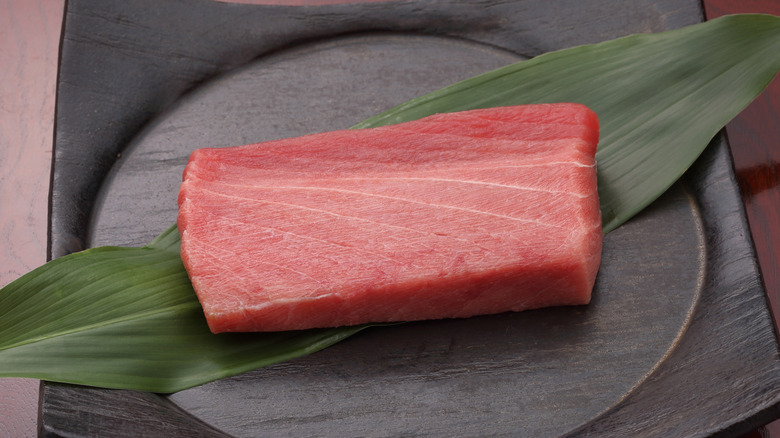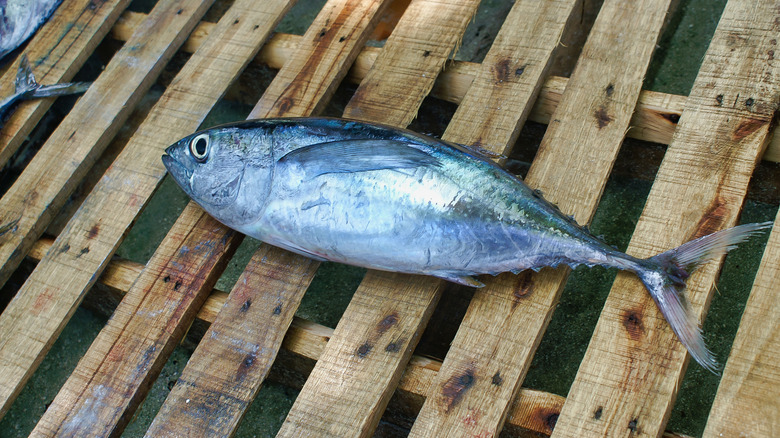The Type Of Tuna You Should Avoid If You're Watching Your Mercury Levels
It's tough to get away from mercury in a fish-heavy diet. As the decades have passed, mercury from power plants and factories has had plenty of time to spread through the oceans and seep into the muscle tissue in swimming fish, and it's basically guaranteed that the tuna you're eating has at least a small amount. However, tuna is generally safe to eat (and extremely nutritious) even if you really shouldn't eat canned tuna every day for long stretches of time. Some species of tuna are heavier than others when it comes to mercury levels — among the most commonly sold types of tuna, the bigeye tuna is one that's worth avoiding if you're concerned.
Bigeye — also known as maguro or occasionally ahi tuna — has substantially more concentrated mercury than other tuna species when compared side by side. In fact, it has nearly twice as much as yellowfin and albacore, and several times as much as lower-mercury tunas like skipjack. You're most likely to see bigeye tuna in sashimi dishes because of how savory it tastes, and it's also sometimes chosen for tuna steaks. Canned light tuna is a popular fish with the lowest mercury levels, so if possible, you should be looking for light tuna or skipjack at the market (or on the tuna can's label).
Why are some tuna more mercurial?
Essentially, there are two different things which contribute to how much mercury a fish contains: its size and its lifespan. Fish which live longer will naturally have more exposure to all the methylmercury in the ocean, and this can lead to heavier concentrations of mercury in the tuna you're eating for dinner. Plus, big tuna species like bigeye have a diet which includes smaller fish, who also have traces of mercury in their systems — as they constantly eat more fish, the mercury from those fish builds up in their bodies alongside the mercury the tuna is already absorbing as it swims around.
Both Pacific and Atlantic bigeye tuna can live up to eight or nine years, and grow to around six feet in length. They're not the biggest tuna — those would be bluefin tuna, which can live for three decades and grow to 14 feet long. However, while bluefin do contain much more mercury, it's rarely ever seen in restaurants, as its populations are threatened. Bigeye tuna are also vulnerable to overfishing, but they're much more popular fish with high mercury levels. On the other side of the tuna scale, skipjack live only a few years and grow to about three feet, explaining their much lower mercury levels. Plus, skipjack tuna isn't at any risk of being endangered currently, according to the Monterey Bay Aquarium's Seafood Watch. So it's a better choice for both global tuna populations and for you.

